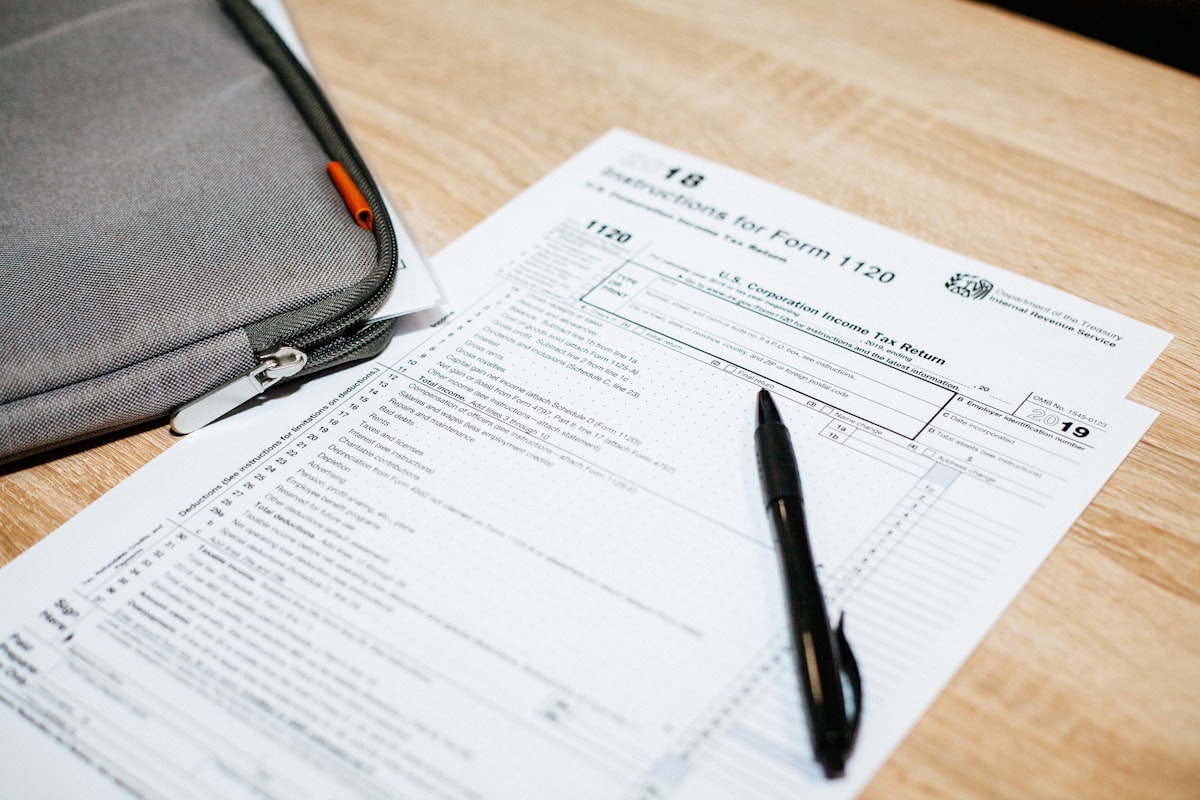What Is Form Design
Form design refers to the process of creating user-friendly and visually appealing forms that are used to collect information from users on websites and applications.
It involves making thoughtful decisions about the placement and layout of form fields, as well as the design of elements such as buttons, labels, and error messages.
Effective form design is crucial for providing a smooth and efficient form-filling process, reducing user errors, and maximizing conversion rates.
By considering factors such as user experience, cognitive load, and mobile usability, designers can create forms that are intuitive and easy to complete.
Well-designed forms use best practices such as clear and concise labels, logical organization of fields, inline validation, and the elimination of unnecessary or optional fields.
The Benefits Of Good Form Design
Good form design is crucial for enhancing user experience, increasing conversions, and minimizing errors.
A well-designed form not only makes it easier for users to enter and submit information but also encourages them to complete the process, resulting in higher conversion rates.
User experience is greatly improved when forms are intuitive and visually appealing.
By implementing clear and concise labels, well-placed form fields, and logical grouping of related information, users can easily understand how to navigate and interact with the form.
Additionally, using radio buttons, progress bars, and inline validation can further enhance the overall experience by reducing cognitive load and providing instant feedback.
Good form design also plays a significant role in reducing website abandonment rates. When forms are poorly designed, confusing, or lengthy, users are more likely to abandon the process out of frustration.
By creating forms that are easy to fill out, mobile-friendly, and streamlined with only essential fields, businesses can significantly minimize abandonment rates.
Furthermore, well-designed forms positively influence users' perceptions of a brand. A seamless and efficient form-filling process not only reflects professionalism but also instills a sense of trust and credibility in the brand.
Users are more likely to perceive a brand as reliable and customer-centric when they encounter well-designed forms on their website.

Understanding User Experience And Cognitive Load
User experience is a crucial aspect of form design. When users encounter a form, they need to haveseveral factors nee a smooth and intuitive experience.
Implementing design principles that make the form visually appealing, easy to navigate, and logically organized can achieve this.
By using clear and concise labels, well-placed form fields, and logical grouping of related information, users can easily understand how to interact with the form.
Additionally, considerations such as using radio buttons, progress bars, and inline validation can further enhance the user experience by reducing cognitive load.
Cognitive load refers to the amount of mental effort required for a user to complete a task.
With the reduction of the cognitive load through intuitive design elements and providing instant feedback, users can more easily and efficiently complete forms, leading to a positive overall experience.
UX And The Role Of Forms
Forms play a crucial role in user experience (UX) design as they are a critical point of interaction between users and websites or apps.
Well-designed forms can reduce friction and improve conversion rates, leading to enhanced user satisfaction and increased revenue.
A poorly designed form can have negative implications on user satisfaction, leading to higher abandonment rates and lower conversion rates.
Users may become frustrated if they encounter confusing or unclear form fields, irrelevant or excessive information requests, or complex and lengthy processes.
To improve the usability of forms, designers should rely on data-informed best practices and guidelines.
These practices consider user behavior, cognitive load, and the principles of effective form design.
By using these guidelines, designers can optimize form layout and structure, simplify the form-filling process, and reduce user error.
The goal is to create a seamless and efficient form experience that minimizes cognitive load and removes unnecessary steps.
This can be achieved through techniques such as inline validation, well-placed labels, and instructions, clear error messages, and progress indicators.

Cognitive Load And Forms
Cognitive load refers to the mental effort and resources required to process and complete a task. In the context of form design, cognitive load plays a crucial role in determining user experience.
When a form imposes a high cognitive load on users, it can lead to frustration, errors, and ultimately, abandonment.
Forms that overload users with excessive information or complex instructions contribute to cognitive load.
When users are bombarded with too much irrelevant or unnecessary information, they may struggle to identify the key information needed to complete the form. This can result in confusion and increased cognitive load.
The layout and structure of a form can also impact cognitive load. Forms that are poorly organized, with confusing or inconsistent field arrangements, can make it difficult for users to understand the flow and structure of the form.
This can increase cognitive load as users have to give additional mental effort to navigate through the form.
Additionally, using unclear or ambiguous labels, instructions, and error messages can further increase cognitive load. Users may spend more time deciphering the meaning of these elements, leading to frustration and potential errors in form filling.
To mitigate cognitive load in form design, it is essential to simplify the form-filling process. Designers should remove any irrelevant or optional fields and only apply the necessary information.
Clear and concise labels, instructions, and error messages should be used, providing users with the necessary guidance and reducing mental effort.
Additionally, using techniques such as inline validation, progress indicators, and logical grouping of related fields can make the form experience more intuitive and manageable.
By reducing cognitive load in form design, designers can enhance user experience, improving completion rates and minimizing user errors.
Understanding the psychology of cognitive load and applying it to form design can result in streamlined and efficient forms that are user-friendly and enhance overall satisfaction.
Factors To Consider When Designing A Form
When designing a form, there are several factors that need to be considered to ensure usability, enhance customer experience, and create an appealing appearance.
It is crucial to simplify the form-filling process. This involves removing any irrelevant or optional fields and only asking for the necessary information from users.
By keeping the form concise and straightforward, users are more likely to complete it without feeling overwhelmed or frustrated.
Additionally, the appearance of the form plays a significant role in user experience. A visually appealing design with a clear and intuitive layout can make the form more inviting and easier to navigate.
Using proper alignment, spacing, and typography can enhance readability and overall aesthetics.
Different types of forms require different design approaches. For example, checkout forms may require specific fields such as credit card information or a shipping address.
Registration forms may include additional fields such as a username or password. Each type of form should be designed with its unique purpose and user expectations in mind.
Usability is a critical factor in form design.
By anticipating and addressing potential user errors, such as validation errors or unclear instructions, the form can be made more user-friendly and error-resistant.
Well-designed error messages and inline validation can guide users through the form-filling process and reduce the likelihood of mistakes.
Lastly, it is essential to consider the impact of mobile screens on form design. Mobile users have different needs and constraints compared to desktop users, including smaller screen sizes and touch interfaces.
Forms should be optimized for mobile platforms, with larger input fields and buttons and the inclusion of features like autocomplete or address lookup.
Different Types Of Forms
Forms come in various types and serve different purposes, each requiring a unique design approach. For instance, checkout forms need specific fields like credit card details and shipping addresses to facilitate smooth transactions.
On the other hand, registration forms may include additional fields such as usernames and passwords. By tailoring the form design to suit its intended use and user expectations, the overall user experience can be significantly improved.
Designers must consider the specific requirements of each type of form and guarantee that the design elements align with the form's purpose.
This includes carefully selecting and arranging the fields, providing clear instructions, and addressing potential user errors through effective error messages and inline form validation.
Login Forms
Login forms play a crucial role in form design, allowing users to securely access their accounts and personalized information. These forms are often the entry point for users, making their design and usability vital.
However, when designing login forms, there are common mistakes that should be avoided.
One such mistake is duplicating the password input field. It may seem intuitive to repeat the password field to ensure users enter the correct password, but this can be confusing and frustrating.
Instead, provide a "Show Password" option that allows users to view the characters they have typed. This feature enhances the user experience, enabling them to review their input without compromising security.
By implementing a "Show Password" option, users can confidently enter their password, minimizing the risk of errors during login.
Additionally, this design principle empowers users and promotes trust, as they have control over their password visibility.
When creating login forms, it is important to consider user experience and avoid common pitfalls. Including a "Show Password" option is a small but impactful feature that can greatly improve the usability and effectiveness of login forms.
Registration Forms
Registration forms are an essential component of many websites, serving as the gateway for users to create an account or access certain features.
The primary purpose of a registration form is to collect necessary information from users while providing a simple and user-friendly experience.
When designing a registration form, it is crucial to strike a balance between capturing essential information and keeping the form design streamlined.
Only ask for information that is truly necessary for the registration process, as excessive form fields can overwhelm users and reduce completion rates.
To enhance usability, incorporate standard form elements such as checkboxes and radio buttons. These elements make it easier for users to make selections and provide input, improving the overall experience.
By using these familiar elements, form completion becomes more intuitive and efficient.
Another aspect to consider in registration form design is reducing cognitive load. Dropdown menus, for example, require users to parse and process a list of options, which can be mentally demanding.
Checkout Forms
When designing checkout forms, it is essential to prioritize user experience and streamline the process to increase conversion rates.
Here are some design considerations and best practices for creating effective checkout forms.
Firstly, guarantee that the form is easy to understand and navigate. Use clear and concise labels for each form field, including product descriptions and pricing information where applicable.
This helps users understand what they are purchasing and how much it costs, making the checkout process more transparent.
Additionally, inline form field validation is crucial for protecting accurate user input. This means providing real-time feedback to users as they fill out the form, highlighting any errors or missing information.
Inline validation minimizes the likelihood of user error and frustration, ultimately reducing the risk of shipping errors or order abandonment.
To further optimize checkout forms, consider incorporating trusted payment options and security seals to enhance user trust and confidence.
Including visual cues that assure customers of the security and legitimacy of the transaction can positively impact conversion rates.
Lastly, make sure the checkout form is mobile-friendly. With the increasing number of users completing purchases on mobile devices, it is crucial to make sure that the form is responsive and user-friendly on smaller screens.
Optimize the form's layout, font size, and button placement to provide a seamless mobile checkout experience.
By implementing these design considerations and best practices, checkout forms can be optimized to provide a smooth and efficient purchasing process for customers, leading to improved conversions and satisfied users.
Contact Forms
Contact forms are a key component of many websites, allowing users to contact the website owner or support team easily.
There are several types of contact forms commonly used, including interactive forms and forms with FAQ integration.
Interactive contact forms go beyond the basic name and email fields by including additional fields specific to the purpose of the contact.
For example, a support request form may include options to select the type of issue or priority level, providing more context to the recipient.
This helps streamline the support process and makes sure that users provide all the necessary information upfront.
Forms with FAQ integration leverage the power of self-help resources to guide users before they submit a contact request.
These forms typically include a search bar that allows users to look for answers within the website's knowledge base or frequently asked questions section.
By providing support options alongside the contact form, users are encouraged to explore self-help resources before reaching out.
One notable example is Slack's contact form, which includes a message box for users to send feedback or launch a live chat.
This allows users to provide more detailed information about their issues or requests, facilitating faster and more effective communication.
Including a message box in contact forms is crucial as it guarantees that users can communicate their needs clearly, leading to better support experiences.
Survey/Questionnaire Forms
Survey/Questionnaire Forms are specifically designed to collect data, opinions, and feedback from users. They gather valuable information for research, analysis, and decision-making processes.
These forms differ from other types of forms, such as contact or registration forms, as they focus on asking a series of questions to elicit specific responses.
When designing Survey/Questionnaire Forms, there are several important considerations to keep in mind. Firstly, the questions should be clear and concise, avoiding any ambiguity that may lead to confusion or incorrect answers.
Additionally, the flow of the questions should be logical and organized, making sure that respondents can easily navigate through the form without getting lost or skipping questions unintentionally.
To create effective Survey/Questionnaire Forms, using best practices is crucial. One important practice is to include progress indicators, allowing respondents to see how far they have progressed and estimate the time required to complete the form.
This helps to reduce respondent fatigue and increases completion rates.
Furthermore, using a variety of question types, such as multiple-choice, rating scales, or open-ended questions, can make the form more engaging and cater to different types of respondents.
It is also important to consider the length of the form, keeping it concise to prevent respondent abandonment.
Additionally, clearly informing respondents about the purpose and confidentiality of the survey/questionnaire can help guarantee participation and accurate responses.

Guidelines For Effective Form Design
When designing a form, whether it's a survey, questionnaire, registration, or checkout form, there are several guidelines to consider to create a user-friendly and effective experience.
1. Plan the form's content upfront: Before diving into the design, take the time to carefully plan the form's content and layout.
2. Keep it simple and concise: Avoid overwhelming users with unnecessary fields or questions.
3. Use appropriate form fields: Choose the right form fields for the information you need to collect.
4. Consider different types of forms: Different types of forms require different considerations.
For example, mobile forms should be designed with smaller screen sizes and touch interfaces in mind.
5. Incorporate inline validation: Help users avoid errors by providing real-time feedback as they fill out the form.
6. Optimize for mobile users: With the increasing use of mobile devices, it's crucial to make sure that forms are mobile-friendly.
7. Use progress indicators: Incorporate progress indicators to give users a sense of how far they have progressed and how much more is left.
Effective form design has numerous benefits. It improves user experience by making the form intuitive and easy to navigate.
It reduces cognitive load by presenting information in a logical and organized manner. Good form design also helps to increase form completion rates and reduce user errors and abandonment.

Final Thoughts
Form design is a fundamental aspect of creating user-friendly and efficient experiences on websites and applications.
It involves thoughtful decisions about layout, field placement, and design elements to enhance user experience and minimize cognitive load.
Form design isn't just about aesthetics; it's about optimizing the user journey, reducing friction, and ultimately achieving better results for both users and businesses.
By following best practices and staying attuned to user needs, designers can craft forms that truly enhance the overall user experience.
How do I test my form design?
Conduct usability testing with real users to identify pain points and gather feedback. Additionally, use A/B testing to compare different form designs and optimize for conversions.
What tools or software can help with form design?
Tools like Adobe XD, Figma, Sketch, and even simple HTML/CSS can be used for form design. Consider using form builder plugins or libraries like React Forms or jQuery Form for web development.
How can I make forms accessible to all users?
Use semantic HTML elements, provide alternative text for images, ensure keyboard navigation, and use ARIA attributes for screen readers. Test your form with accessibility tools.






